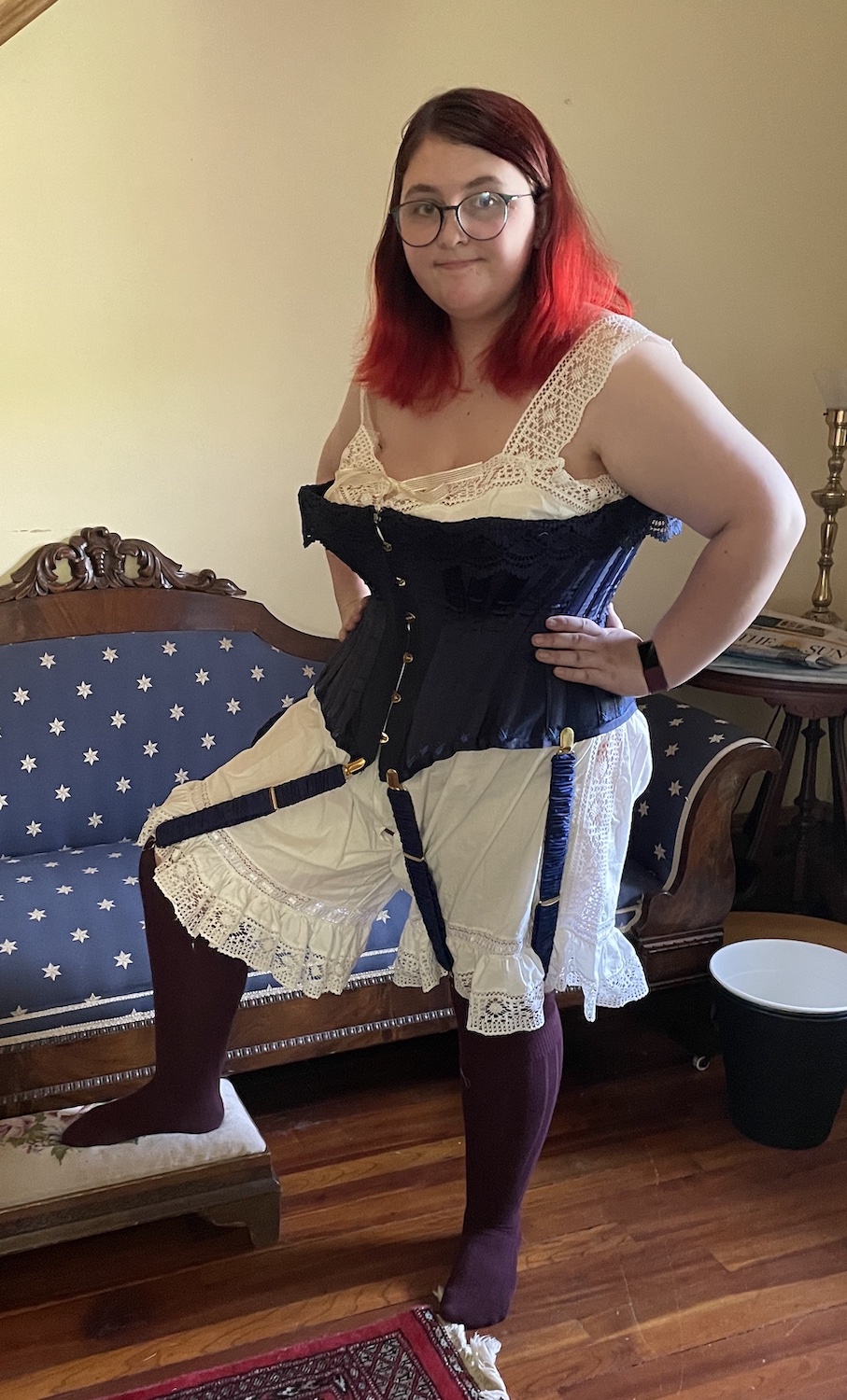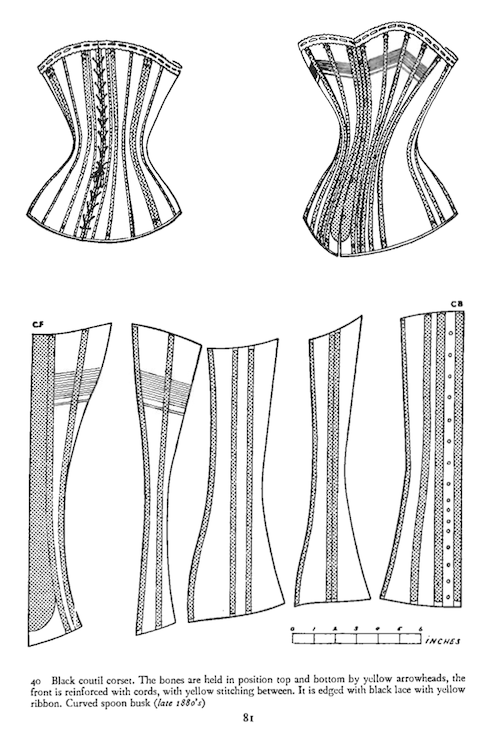 Adia Sisson
Adia Sisson
 Adia Sisson
Adia Sisson
This 10-piece corset follows the pattern from image 40 in Corsets and Crinolines by Norah Waugh. Waugh's description of the corset is as follows: "Black coutil corset. The bones are held in position top and bottom by yellow arrowheads, the front is reinforced with cords, with yellow stitching between. It is edged with black lace with yellow ribbon. Curved spoon busk (late 1880's)" (81).


This corset combined the technique of cording with a simple pattern of 5 vertical pieces per side. I used jumbo zip-ties for boning. The plastic boning kept the corset light, and because of the structure and shape of the pieces, it remained supportive without the need for metal.
I modified this pattern directly from Corsets and Crinolines by Norah Waugh, digitizing and stretching the pieces to fit my waist size. This corset was constructed using outward-facing seams that were then trimmed and covered with grosgrain boning channels, with the exception of the busk piece, which uses an inward seam that is top-stitched down. The decision to use grosgrain ribbon, while it was pretty to look at, was a bad one. The boning tore through the channels repeatedly, forcing me to floss the top and bottom of each bone to hold them in place and reinforce the channels.
This corset is both extremely comfortable and allows for multi-inch waist reduction. When tightlaced, the bust sits lightly in the corset, allowing for easy breathing and no constraint from the top. The belly curves outward with the molded spoon busk, leaving plenty of room for flesh, with the ability to breath and bend easily. To hold the busk in for a straighter silhouette, I commissioned a pair of matching silk suspenders which attach to the front and side of the corset and hold my stockings up outside my combinations or chemise/shift.
While I first laced this with the standard rabbit-ear method, I later fan-laced it so that I could easily put it on myself, as the back is slightly too high for me to get an even lace through the entire back. With the fan lacing, I can close the busk and pull the ties straight out to my desired tightness, and fasten the ties in front of the busk. This also allows for easy removal without stressing the fabric by simply undoing the busk while still laced tightly.